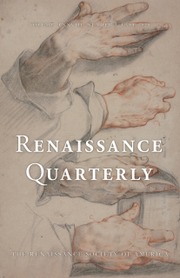“Porticoes and loggias” express “a new sensibility,” according to Natsumi Nonaka; “an interpenetration of alternate forms of sensory experience suffused these semi-interiors” (Renaissance Porticoes and Painted Pergolas [2017], 35, 44). Leon Battista Alberti already understood how, as Mark Wilson Jones put it, “exterior and interior spaces interpenetrate through the use of semi-enclosed spaces” such as loggias, porticoes and colonnades (The Farnesina: Villa, Palazzo and Theatre [1982], 26). Confalonieri’s title quotation—a character in an unfinished tragedy by Torquato Tasso referring to “these spacious loggias” around her (239), presumably depicted in the stage set—defines precisely the object of his study, the interpenetration of key issues in literary theory, architecture, and selected tragedies by Gian Giorgio Trissino, Galeotto del Carretto, Pietro Aretino, Luigi Groto, and Tasso himself. Confalonieri recognizes Alina Payne’s important work on the architectural treatise, but he now proposes to bring together questions discussed in isolation by specialists in separate disciplines: how architects from Vitruvius to Serlio and Palladio understood the relations between the building, the human body, and the larger urban environment; whether authors applied architectonic analogies and criteria to texts (and vice versa); whether Renaissance poetic treatises such as Lodovico Castelvetro’s followed Aristotle or merely used him as a “mask” (113); whether visual spectacle (opsis) or verbal communication was more important for tragedy, and how the development of painted perspectival scenery changed this “hierarchy” of values (126); how the famous three unities were inferred from Aristotle’s Poetics, and how they were applied in practice. Confalonieri’s overarching question, in fact, is how the unity of place related to the unities of time and action.
“Queste spaziose loggie” falls into two halves, corresponding to theory and practice. The introduction synthesizes a phenomenal range of thinkers and scholars of “discursive formation,” beginning with Daniel Javitch’s witty observation that “Aristotle may have been a midwife, but he didn’t lay the egg” (9). Chapters 1 to 3 then show how Renaissance treatises constitute an “interdisciplinary laboratory” linking architecture, painting, and literature, “body, text, edifice and city” (23, 66, 88). Chapters 4 to 7 deal with individual tragedies, embedding them in their authors’ circumstances and showing how the features of the city are “textually presupposed” (179) in prologues and speeches: Aretino’s only tragedy, Orazia, becomes an “allegory of a city,” while in Groto’s Adriana “the places tell the story” (161, 183). The book ends with a coda on tragic theory “from Tasso to Tolstoy” (247). The documentation is of “exceptional density” (172), with long passages from abundant primary sources and footnotes almost filling the page. Coverage of the scholarship is impressively broad, though Confalonieri might have engaged with Morten Bartnæs’s provocative argument that Tasso’s Re Torrismondo is actually a travesty. (I also wanted to ask why so much of the scenographic evidence relates to comedies when the focus is explicitly tragedy.) Nevertheless, this is a most valuable resource for scholars, even if the lack of an index means that readers must swim through the entire text to satisfy their individual interests.
The “architecture” promised in Confalonieri’s title is considerably sparser than the richly documented literature. The main items of visual evidence will be familiar to all readers of RQ: Leonardo’s Vitruvian man spreadeagled in a circle (66), Francesco di Giorgio Martini’s superimposition of human features on the entablature and plans of a building and a fortified town (94), Sebastiano Serlio’s illustrations of the tragic and comic scene, “ideal city” paintings that might also be perspectival set designs (127–29). But these appear only as small black-and-white figures, and overall, though the idea of visual and spatial experience is constantly cited, concrete instances are not emphasized. Though the Teatro Olimpico in Vicenza is mentioned frequently, neither it nor any other architectural example is analyzed per se. The spaziose loggie of Confalonieri’s title turn out to be only the threshold of the book and not its main focus: loggias are mentioned only occasionally, not singled out for particular scrutiny but evoked among various generic features and locales that meet the eye of the spectator or the mind’s eye of the reader—“these ample loggias,/these piazzas, these arches, these walls” (198, cf. 37). Ariosto’s Orlando furioso, for example, is compared to a palace “false in its model” where “halls, chambers, loggias and windows” covered in marble and gold delight the unsophisticated visitor, in contrast to the compact, unified structure of Tasso’s epic (85).



